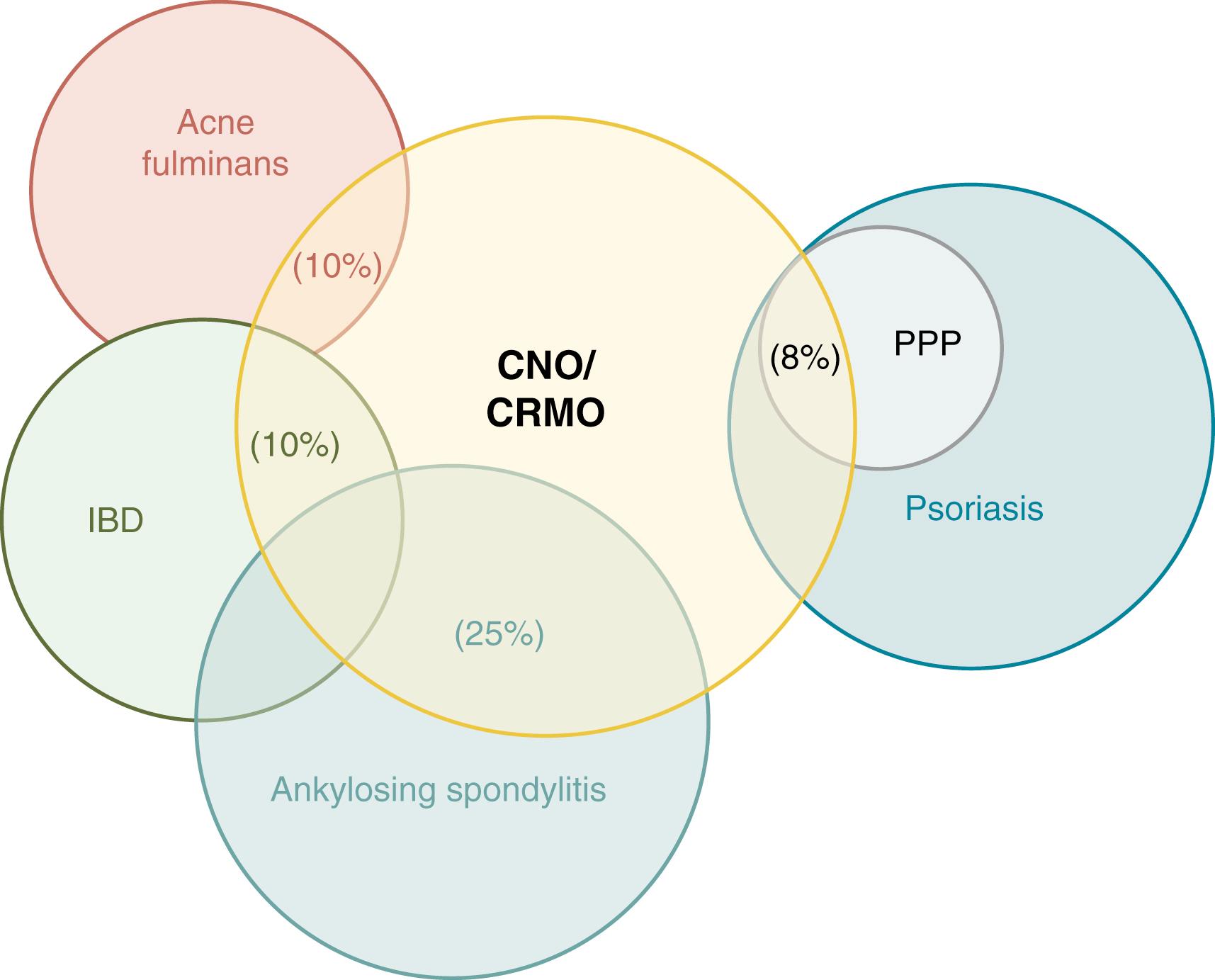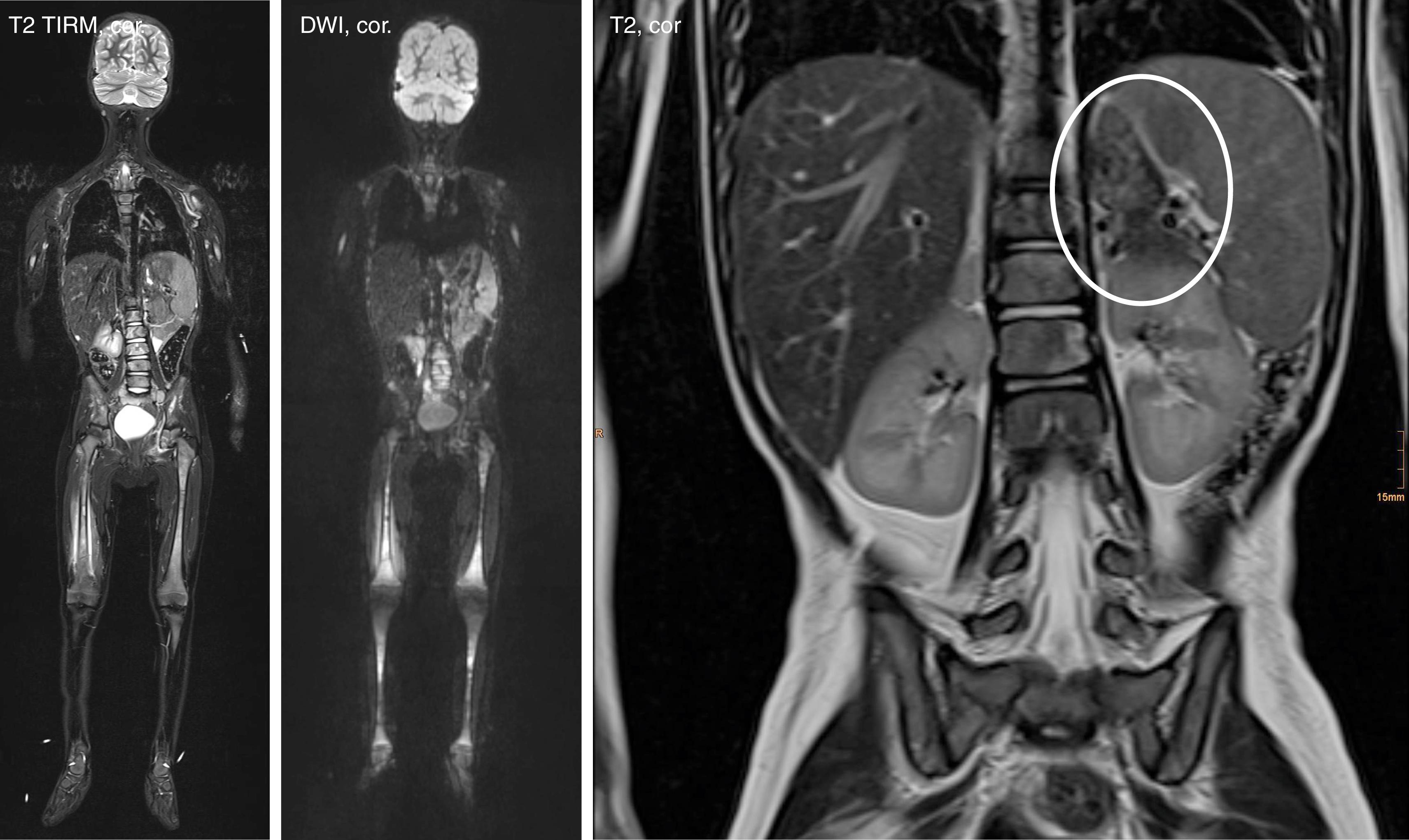Physical Address
304 North Cardinal St.
Dorchester Center, MA 02124
Autoinflammatory disorders (covered extensively in Chapter 39 ) result from aberrant and/or spontaneous activation of components of the innate immune system. , At least initially, they occur in the absence of high titer autoantibodies or autoreactive lymphocytes. This, by definition, distinguishes them from classic autoimmune disorders. , Autoantibodies and autoreactive lymphocytes, however, may develop over the course of disease partially as a result of tissue damage and exposure of the immune system to intracellular components. The concept of autoinflammatory disorders was proposed in 1999, after the identification of the genetic basis of the prototypic periodic fever syndromes, familial Mediterranean fever, and tumor necrosis factor (TNF) receptor–associated periodic syndrome (TRAPS). , There are now more than 30 disorders that are thought to be autoinflammatory, most of which affect children; included are a group of disorders that have bone inflammation as a main phenotypic feature including chronic nonbacterial osteomyelitis (CNO) and its severe form chronic recurrent multifocal osteomyelitis (CRMO); synovitis, acne, pustulosis, hyperostosis, osteitis (SAPHO) syndrome; Majeed syndrome; deficiency of interleukin-1 receptor antagonist (DIRA), and cherubism. , ,
In 1972, Giedion recognized what is now commonly referred to as chronic recurrent multifocal osteomyelitis (CRMO) as a distinct clinical entity when he described four children with noninfectious multifocal osteomyelitis who presented with subacute and chronic symmetrical osteomyelitis. The term chronic recurrent multifocal osteomyelitis was coined by Probst, Bjorksten, and Gustavson to describe the recurrent nature of the illness. , Since that time, the term has been commonly used for this clinical entity despite the fact that the disease is neither always multifocal nor recurrent. Thus, several authors suggested that CNO be used as an umbrella term for all presentations, and CRMO only for recurrent and multifocal forms. ,
CNO/CRMO can be associated with other inflammatory manifestations. The co-occurrence of CNO/CRMO with pustulosis palmoplantaris (PPP) was reported in 1967 in a child with bilateral clavicular osteitis, but it was Bjorksten et al. who firmly established the association with CRMO and PPP. , The association of CNO/CRMO with PPP has been confirmed by others and descriptions of additional dermatological associations with CNO/CRMO, including psoriasis vulgaris, severe acne, generalized pustulosis, and Sweet syndrome. Subsequently, reports of the co-occurrence of CNO/CRMO and inflammatory bowel disease emerged, as well as the observation that CNO/CRMO may evolve into spondyloarthropathy over time in some patients, suggesting that CNO/CRMO might best fit in spondyloarthropathy family of disorders ( Fig. 40.1 ).

Subsequently, the identification of the genetic basis for a subgroup of early-onset CNO/CRMO cases (Majeed syndrome) , , and murine models of disease (cmo and lupo mice), , in addition to the observation that spontaneous NLRP3 inflammasome activation and subsequent proinflammatory cytokine expression are key molecular events in CNO/CRMO, has defined CNO/CRMO as an autoinflammatory syndrome. , ,
Reviewing the CNO/CRMO literature is complicated by the fact that many terms have been utilized to describe similar clinical entities. Names that have been used to describe cases of sterile inflammatory bone disorders that occur in the presence or absence of skin or intestinal inflammation are listed in Box 40.1 . , The most common terms utilized in the literature are CNO, CRMO, and SAPHO syndrome . SAPHO is an acronym proposed in 1987 by Chamot et al. as a broad umbrella term to denote a clinical syndrome characterized by inflammation of the bone, joint, and skin. , SAPHO (synovitis, acne, pustulosis, hyperostosis, osteitis) syndrome encompasses bone inflammation in the form of sterile osteomyelitis or hyperostosis, inflammation of the skin including acne or pustulosis, and inflammation of the joint in the form of synovitis. SAPHO syndrome is the term most frequently utilized by adult rheumatologists, whereas the pediatric community has primarily utilized the term CNO/CRMO. , , SAPHO syndrome and CNO/CRMO may well be the same, or closely related, disorder presenting in different age groups (CNO/CRMO in childhood and SAPHO in adults), or it may be that they are distinct disorders that are part of the same disease spectrum.
Chronic recurrent multifocal osteomyelitis
Chronic sclerosing osteitis
Pustulotic arthrosteitis
Chronic multifocal cleidometaphyseal osteomyelitis
Chronic symmetrical osteomyelitis
Chronic multifocal symmetrical osteomyelitis
Sternocostoclavicular hyperostosis
Sternoclavicular pustulotic osteitis
Diffuse sclerosing osteomyelitis
Multifocal recurrent periostitis
Bone lesions of acne fulminans
Clavicular hyperostosis and acne arthritis
Chronic nonbacterial osteomyelitis
Another problem with the term CRMO is that a subgroup of patients develop unifocal disease whereas others exhibit multifocal bone inflammation without recurrence. This limits the accuracy of the diagnostic term for many patients’ clinical course. For instance, in a German cohort of 89 patients with at least one noninfectious inflammatory bone lesion, approximately 20% had bone inflammation in one location with disease duration less than 6 months without recurrence (unifocal nonrecurrent), nearly 45% of patients had classic CRMO with multiple bone lesions with recurrent flares with remissions (recurrent multifocal), and the remaining 35% had persistent multifocal bone inflammation for longer than 6 months without remissions (persistent multifocal). In addition, some children present with unifocal disease yet over time develop classic multifocal recurrent disease. Similarly, in a cohort of 30 pediatric patients with sterile osteitis reported by Girschick et al., 30% had unifocal nonrecurrent disease, 10% had unifocal recurrent disease, 30% had multifocal nonrecurrent disease, and 30% had classic CRMO. Because of this, several authors have proposed other names, which have included chronic nonbacterial or noninfectious osteomyelitis (CNO) and chronic nonbacterial osteitis (NBO). , In this chapter, we will utilize the terms CNO and CRMO in combination (CNO/CRMO), but we think that CRMO covers a subgroup of CNO patients experiencing chronically recurrent and multifocal disease.
CNO/CRMO is a rare disorder. To date, several hundred cases have been reported in the literature. The exact prevalence and incidence, however, remain unknown. Estimated incidences in Germany range from 2 to 80 per 100,000 children. , Whereas early reports of CNO/CRMO were predominantly from Scandinavia and central Europe, reviews of the literature suggest a worldwide distribution of disease affecting multiple ethnicities and races. , , ,
CNO/CRMO is primarily a disease of children and young adolescents with peak onset between 7 and 12 years of age. , Girls are approximately two to four times more frequently affected than boys. , , , Although the majority of cases manifest in childhood, adults can be affected and are more likely to develop skin involvement and therefore be reported as SAPHO syndrome. , , Disease onset prior to age 2 years is unusual and should prompt an evaluation for syndromic autoinflammatory disease with CNO/CRMO, including DIRA; pyogenic sterile arthritis, pyoderma gangrenosum, and acne (PAPA); and Majeed syndrome, as well as other differential diagnoses (malignancy, infection, etc.) ( Fig. 40.2 ). ,

CNO/CRMO is usually classified as an autoinflammatory disorder based on the absence of high titer autoantibodies and/or autoreactive lymphocyte populations and “seemingly unprovoked” episodes of inflammation. , , Cultures of the bone are typically sterile and antibiotic therapy is rarely accompanied by clinical improvement, whereas antiinflammatory medications improve the condition. , , Despite the inability to detect pathogens in the vast majority of cases, some authors postulated that CNO/CRMO is driven or triggered by exposure to a microbial agent. There are a few reports of bone cultures growing organisms including Propionibacterium acnes, Mycoplasma, and various Staphylococcus species . , , , , However, it remains unclear if these represent contaminated specimens or true infection. In a cohort of adults with inflammatory osseous anterior chest wall lesions, most of whom also had palmoplantar pustulosis, Propionibacterium acnes was cultured in bone biopsy samples from 7 of the 15 patients, suggesting that for this population of adult patients, infection may have played a role in pathogenesis. However, in children with CNO/CRMO and for most adults with SAPHO syndrome, the vast majority of cultures and/or eubacterial polymerase chain reaction of pustules and bone are negative. , , , , Furthermore, serological testing for Borrelia burgdorferi, Salmonella, Yersinia enterocolitica, Campylobacter jejuni , and Streptococcus pyogenes showed no evidence of acute or chronic infection with any of these microbes. The observation that prolonged antimicrobial therapy usually does not result in clinical improvement supports an autoinflammatory etiology of CNO/CRMO or SAPHO syndrome that is independent of infections. , , , Schilling et al. reported that 7 of 13 patients with CNO/CRMO treated with azithromycin had rapid clinical and radiological improvement. , However, azithromycin has known antiinflammatory effects, so a response to azithromycin does not necessarily support a role for active infection in CNO/CRMO. , In the authors’ experience, and based on case series and conversations at expert consensus meetings, antimicrobial treatment with azithromycin usually does not result in long-lasting control of osteitis and therefore does not play a role in the recommendations for treatment of CNO/CRMO. , , Bjorksten et al. and Jurik et al. noted that approximately 25% of CNO/CRMO patients reported trauma preceding the development of chronic bone inflammation, , suggesting tissue damage as another possible trigger, although this has not been found in most series.
Become a Clinical Tree membership for Full access and enjoy Unlimited articles
If you are a member. Log in here